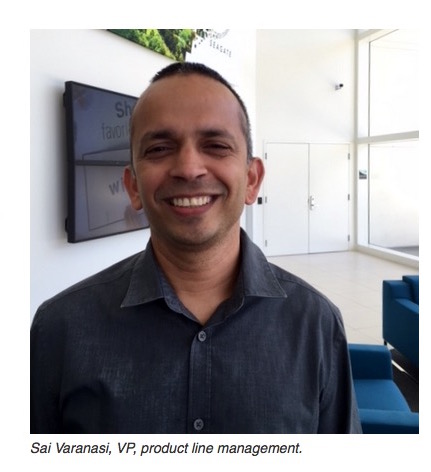Q&A: Sai Varanasi on Seagate’s New MTC Technology
 Last month, Seagate unveiled its new Guardian Series of high-capacity client storage solutions. Among the innovative capabilities behind these products is the company’s new Multi-Tier Caching technology (MTC Technology™), an architecture designed to maximize performance and end user value for the new BarraCuda and FireCuda drives.
Last month, Seagate unveiled its new Guardian Series of high-capacity client storage solutions. Among the innovative capabilities behind these products is the company’s new Multi-Tier Caching technology (MTC Technology™), an architecture designed to maximize performance and end user value for the new BarraCuda and FireCuda drives.
To learn more, we spoke with Sai Varanasi, Seagate VP for product line management.
Q: What is MTC Technology and why is it important?
A: This technology optimizes data flow and data storage across multiple storage media. Generally speaking, these media would include DRAM, NAND flash, perpendicular recording, SMR (shingled-magnetic recording) and HAMR (heat-assisted magnetic recording). MTC Technology is the basic foundation on which Seagate builds purpose-built drives optimized for new applications and vertical markets.
Q: What do you mean by “purpose-built drives?”
A: The future of the client storage market is to enhance the end-user experience with devices aimed to meet the application-unique needs in terms of performance, reliability, power, security, form factor and overall value. For example, performance metrics for a PC-gaming enthusiast are very different from performance metrics for a creative professional; creative pros are more concerned about being able to edit and save large video files, while PC gamers care more about game load times and play experience.
To take this a step further, the performance needs of NAS (network-attached storage) systems are measured by data availability for multiple users over local-area networks, while video surveillance customers are more concerned about write-streaming performance from multiple camera sources. That’s why designing drives that are purpose-built is key to meeting customer requirements and enhancing their experiences.
Q: You talked about purpose-built devices from a performance perspective. What about data reliability in each of these applications?
A: While data protection and product reliability are the cornerstones of any solution we deliver, they imply different expectations in different applications. For example, in surveillance applications, customers don’t want to lose any image when recording from multiple cameras onto one drive simultaneously. In the surveillance market, reliability is measured in terms of “stream-write performance” while maintaining image integrity.

In case of compute applications, we don’t want to lose any user data, however small the file may be. Which is why reliability in the compute market is measured in terms of number of errors per bits read. Reliability expectations for NAS applications are even higher than compute, while also maintaining performance over a larger user base.
Q: So how does MTC Technology enable purpose-built solutions and enhance the customer experience?
A: Each application has unique workload characteristics. For example, digital video recorder (DVR) application workloads are large block-sequential writes, while PC-gaming workloads are typically burst-reads during play, and highly sequential during game downloads. On the storage media side, each media has unique workload characteristics. For instance, flash is good for caching (for quick read back) small block workloads, while SMR is great for large block-sequential writes.
MTC Technology algorithms flow and store data in the most appropriate storage media, depending on various workload characteristics, such as write intensity, read intensity, block size and latency requirements.
Q: How does Seagate rank in the industry with regard to tiered caching/storage technology?
A: Within a storage device, no one in the industry does a better job than Seagate in managing data flow between various storage media. This technology is built on more than 10 years of our leading intellectual property in data-flow management. As an example, we were the first storage device company to introduce SSHDs (solid-state hybrid drives) and will be introducing our sixth-generation SSHD device later in calendar year 2016.
Q: How do technologies like conventional media recording (CMR), SMR and HAMR relate to or fit within MTC Technology?
A: SMR, CMR, TDMR and HAMR are underlying areal-density enablers that Seagate can mix-and-match using MTC Technology to deliver application-specific solutions that meet performance and reliability expectations of our customers. Our goal is to provide the best experience and value to the end users who trust Seagate to manage their data “under the hood.”
Q: Do our customers need to make any changes to their system software in order to use our MTC Technology devices?
A: All our MTC Technology-based devices are plug-and-play. No changes are required in host command/file structures to realize the total value of our solution. In addition, Seagate will continue to support the required host-command structure, for customers who want to optimize the workload to maximize drive performance.






